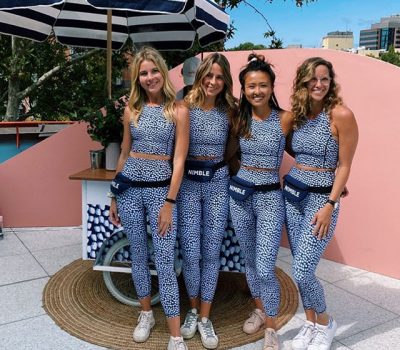What Is Sustainable Fashion?

If you follow fashion trends, you’ve probably heard the term sustainable fashion at some point, but it can be very unclear what exactly it means. After all, it’s trendy to place sustainable ahead of many words, including travel, food, businesses and more. When it comes to fashion however it refers to clothing that is designed, manufactured, distributed and used in ways that can be maintained without impacting the environment in a negative way. In many cases the term sustainable fashion goes hand in hand with ethical fashion, although the latter generally refers to clothing that takes into consideration social welfare, worker rights and even clothing that avoids the use of pelts, leather and any kind of animal fibers. While these practices are becoming more and more prevalent in today’s society, we still aren’t at a point where the majority of the clothes we wear is considered to be sustainable.
In order to be considered sustainable, the fashion industry must be able to make clothing in ways that can be sustained for years and even decades. Unfortunately however, most of the clothing we wear isn’t made in ways that they can last for years. They tear easier, fade when washed, and more, simply because they are designed to be cheap so that consumers will purchase more in long run. Trends change every year as well, which creates a consumer mindset of always needing to purchase something new. For a lot of people, clothing is disposable, meaning they wear items a few times, and either throw them out or store it in their closets, never to be worn again. What this means is that the Earth’s natural resources are being depleted at exponential rates to create new items, while the planet’s garbage creation continues to grow. It doesn’t have to be this way however, and there are some things that can be done.
Buy Clothing Made From Natural and Organic Materials
Natural materials such as hemp, cotton, silk, wool, linen, leather and cellulose fibers are better for the environment that synthetic fibers made from petroleum. This includes polyester, acrylic and nylon. This is simply because natural fibers are biodegradable and can typically be composted, which means our landfills will not be filled with unworn clothing for years to come. Some natural fibers are more sustainable than others, but this is a good start. Cellulose fibers can be fine as well, but make sure they have organic certifications like GOTS so you know the companies using them are environmentally conscious.
Look For Clothing That Uses Recycled Materials
More and more fashion houses have started using clothing made from recycled materials. By doing so, new resources don’t have to be extracted from the Earth, which helps eliminate waste. Look for clothing that use recycled, repurposed or deadstock fabrics.
Buy Second Hand Clothes
Some clothing is made to last, which is why thrifting has become a popular activity to find deals on gently worn and hardly used clothes. Especially among the younger generation. Many people donate great clothing that looks good, is in great shape, and is trendy. By buying second hand you are doing your part to help the environment.
Look For Low Waste Designs
The biggest wasteful activity in the fashion industry comes from cutting out patterns and throwing out the scraps. To make things worse, fashion manufacturing uses a lot of water and energy to manufacture clothes, and many businesses use excessive packaging to ship their products. Keep your eyes open for brands that minimize their byproduct waste during manufacturing and who avoid using a lot of packaging. Keep an eye open for businesses that use a lot of non eco-friendly dyes and have a complicated finishing process as well. They are out there, you just need to look for them.
Shop For Locally Made Clothes
Locally made clothing has a much lower carbon footprint. Period. By not having to ship clothing from overseas, or even across the country, clothing manufacturers can avoid excessive pollution caused by planes, trains and big rig trucks. Many of these businesses are also willing to tell you where they’ve sourced their materials as well.



